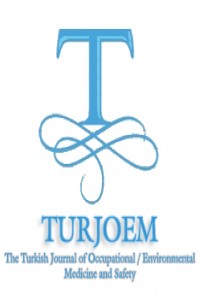Abstract
In recent years,
iron oxide nanoparticles (Fe2O3 NPs) have been widely
used in biomedical applications, for both diagnosis and therapy, due to their
unique magnetic properties. Although the wide spread using, the impact of Fe2O3
NPs on the environment and on biological species is not well understood. In
this study, genotoxic effects of Fe2O3 NPs have been
determined in human peripheral lymphocytes in vitro by using sister chromatid
exchange (SCEs) assay. Peripheral lymphocytes were incubated with four different
concentrations (39,062; 78,125; 156,25 and 312,5 μg/mL) of Fe2O3
NPs (Sigma-Aldrich, <50 nm, spherical) for 24 and 48h. The results showed
that the frequency of SCEs increased at all the treatment times dose
dependently (r=0,85 for 24h; r=0,86 for 48 h), however, this increase was
significant only at the highest concentration (312,500 μg/mL) at 24 h, and at
the two highest concentrations (156,250 and 312,500 μg/mL) at 48h. The
formation of SCEs has been correlated with recombinational repair and the induction
of point mutations, gene amplification and cytotoxicity. This effect may occur
from oxidative stress that has been produced by reactive oxygen species (ROS).
Long term exposure to these nanoparticles could potentially result in particle
accumulation and subsequently induce acute or chronic toxicity. This may
provoke a range of long term effect involving mutagenic, carcinogenic or
teratogenic influence on the organism.
Keywords
GENOTOXICITY OF IRON OXIDE NANOPARTICLES IN HUMAN LYMPHOCYTES BY SISTER CHROMATID EXCHANGES
References
- Yasemin SAYGILI, Fatma ÜNAL, Deniz YÜZBAŞIOĞLU
- Genetic Toxicology Laboratory, Department of Biology, Faculty of Science, Gazi University, Ankara-Turkey
Abstract
References
- Yasemin SAYGILI, Fatma ÜNAL, Deniz YÜZBAŞIOĞLU
- Genetic Toxicology Laboratory, Department of Biology, Faculty of Science, Gazi University, Ankara-Turkey
Details
| Journal Section | Articles |
|---|---|
| Authors | |
| Publication Date | February 16, 2017 |
| Published in Issue | Year 2017 Volume: Volume 2 Issue: İssue 1 (1) - 2.İnternational Congress Of Forensic Toxicology |


